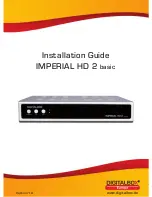
PAGE 24 AR5000 OPERATING MANUAL
LSB
Lower Side Band - is a form of Single Side Band (SSB).
LSB tends not to be used commercially but is extensively
used by Radio Amateurs on frequencies below 10 MHz.
This assists the separation of Commercial and Amateur
users on traditionally shared bands and prevents them
from speaking to each other.
SSB is a very efficient method of transmission as the
unwanted second sideband and carrier have been
removed. This allows the full transmitter power to be
employed in carrying useful information within the wanted
sideband. As a result, greater distances are possible on
SSB and a smaller frequency bandwidth is required than
most other modes.
The AR5000 uses true carrier re-insertion and a dedicated
SSB I.F. filter so that voice becomes intelligible. However
due to the complexities of SSB, audio never sounds 100%
natural and often listeners comment on it sounding a little
like Donald Duck or Micky Mouse but this is normal and
with practice you soon become used to this characteristic.
This is not a criticism of the AR5000 and is applicable to
ALL SSB receivers in varying degrees... the AR5000
being very good.
Small tuning steps of 10 Hz (or 100 Hz at most) should
be used for tuning in LSB and other similar modes USB &
CW.
The SSB frequency display is not offset (like some other
units). However being such a compact wide band receiver,
it will not be unusual for the SSB display to be very slightly
off frequency when listening to known frequencies such
as VOLMET (airband weather forecast service).
USB
Upper Side Band - The same comments apply as for
LSB. By convention, Radio Amateurs also use USB above
10MHz.
All long range shipping and oceanic air traffic (as well as
long range military aircraft) use USB. DATA modes such
as RTTY, SITOR, PACKET, FAX etc may be resolved
using USB.
CW
Continuous Wave - Often referred to as Carrier Wave or
Morse code (dots and dashes). Commonly used on the
short wave bands by radio amateurs toward the lower
end of each band allocation. Some commercial use is
still made by shipping etc although its use is being phased
out due to the introduction of automated stations. The
AR5000 has the provision for the operator to select the
frequency offset used by the receiver in CW mode using
the AF.SET menu.
Note about AGC (Automatic Gain Control)
If the AGC is not set appropriately, audio will sound
distorted. The key sequence
activates the
AGC menu.
In FM mode the options are AGC ON / OFF and in other
modes are OFF, FAST, MIDDLE and SLOW. When AGC
OFF has been selected, two horizontal bars “=“ are
displayed on the LCD between the kHz and MHz legends.
FM:
AGC OFF
AGC ON
Other modes:
AGC OFF
AGC FAST
AGC MIDDLE
AGC SLOW
Note: “
AUT
AUT
AUT
AUT
AUT
” for AUTO AGC will be displayed toward the
top right of the LCD if AUTOMODE is in operation, the
appropriate AGC selection will be made automatically by
the AR5000.
6-10 IF BANDWIDTH
The I.F. bandwidth selects how SELECTIVE the receiver
will be when monitoring signals off air. However it is not
simply a case of using the narrowest filter at all times,
particular modes require differing amounts of bandwidth
in order to operate otherwise the receive system simply
will not produce intelligible sound!
Correct receive mode and IF bandwidth must always be
selected for optimum reception. If the bandwidth selection
is too narrow, distortion or signal break-up may occur. If
the bandwidth selection is too wide, adjacent interference
may be encountered.
For this reason, a selection of I.F. filter bandwidths are
fitted as standard. Typical examples of receive mode and
IF bandwidth are:
FM 220kHz VHF FM broadcast (110k may also be
used - mono only)
FM 110kHz TV audio (also VHF FM broadcast - in
mono only)
FM 100 or 30kHz Wireless mic, etc (30kHz for
satellite FAX too)
FM 15kHz PMR, amateur band etc FM 6 kHz may
also be used
AM 6kHz VHF / UHF airband, short wave broadcast,
medium & long wave, PMR etc
USB/LSB 3kHz Short wave amateur band, short wave
utility such as oceanic airband etc
CW 3kHz (0.5kHz with optional filter fitted). Morse
code used by radio amateurs and some
marine traffic on short wave
An appropriate IF filter is automatically selected when
automode is engaged. However any combination of IF
filter and receive mode is possible in the MANUAL MODE.
When you have manually selected an IF filter bandwidth,
AUTOMODE will be disengaged, but the receive mode,
stepping size, etc will be retained until they are changed
manually.
















































